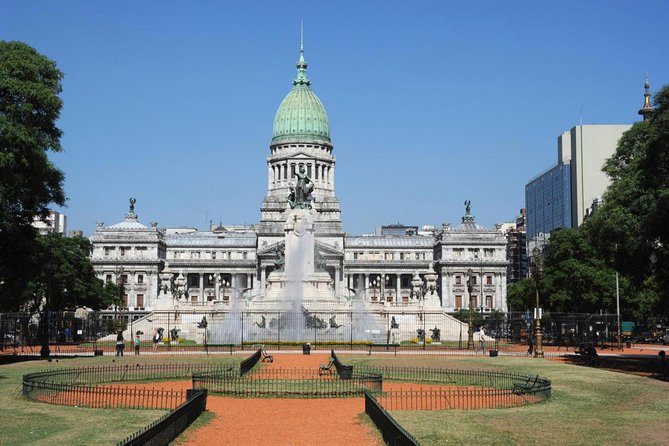RIO DE JANEIRO, BRAZIL – Argentina was heading toward its second default in 20 years when the coronavirus pandemic hit. President Alberto Fernández is now in Europe seeking support to defer sovereign debt payment.
Argentina’s economy plunged 9.9% in 2020. Like many other Latin American countries, Argentina was badly hit by the Covid-19 pandemic, but with the difference that the country was already struggling with an external debt totaling US$323 billion.

In May 2020, three months after the pandemic emerged, Argentina defaulted for the second time in two decades by failing to repay debt interest to private creditors.
A year later, president Alberto Fernández is visiting Europe, trying to negotiate another restructuring of the deal struck in 2018 by ex-President Mauricio Macri’s government with the International Monetary Fund (IMF).
Fernández flew to Lisbon this week in search of European support. Spain and Portugal have already assured their backing to the Argentine president, who on Wednesday, May 12, met with French President Emmanuel Macron and Italian Prime Minister Mario Draghi.
What is wrong with the current payment plan?
Argentina must start repaying the US$44 billion received from the IMF loan this year, but in March Fernández said that the debt was too heavy a burden for the country. In 2021, Argentina must pay US$3.5 billion, then another US$18 billion in 2022, and US$19 billion in 2023.
The Argentine president intends to defer payments for four years, when Argentina’s economy is expected to be in better shape. Fernández also wants the IMF to cut the interest surcharges applied to deferred repayments.
“The issue is not about not paying, but rather to be able to reach an agreement that allows us to sustain our economic plan, of development and growth, while not forgetting that 40% of the population living below the poverty line,” he told the C5N channel in March.
The country also needs to repay a US$2.8 billion loan to the Paris Club, a body of creditor countries that provide sustainable solutions to debtor countries. The Paris Club has requested that the Argentine government first reach an agreement with the IMF before considering its own debt restructuring.
Was debt restructuring not resolved last year?
In September last year, Latin America’s third largest economy restructured an additional US$65 billion in debt with private creditors, not the IMF. The government had been negotiating with a group of large U.S. investment funds, led by BlackRock.
Investors agreed to recall their defaulted bonds in exchange for new bonds, which will be repaid at less than 55 cents per dollar of the original value, a significant loss.
The deal was significant because it meant that the country would not be excluded from international credit markets. It also averted the tremendous damage to reputation that a full, open-ended default would entail.
The Argentine government said the restructuring would reduce interest payments on the bonds from 7% to 3% and provide financial relief worth US$37.7 billion over the next 10 years.
But while the government insists that the new terms will ensure that the debt can be repaid, some analysts think that by 2024 Argentina will have defaulted once again.
Why can’t Argentina pay its debts?
Successive governments, beginning with that of Juan Domingo Perón in the 1940s and 1950s, have burdened Argentina with huge unmanageable debts.
Some of the current problems date back to the 1998-2001 economic crisis, when the country defaulted on US$100 billion in debt, the largest default in history at the time.
In 2005 and 2010 it offered holders of the defaulted debt new bonds worth 35 cents for every dollar owed. When 7% of its creditors, mostly hedge funds, refused to accept the deal, the government defaulted again in 2014, and would only reach an agreement two years later, in 2016.
Argentine economy in deep recession
The Argentine economy has been in a deep recession since 2018. According to FocusEconomics, the country’s unemployment rate reached 10.4% in 2020, and annual inflation is currently estimated at 48%, further eroding the value of the peso.
Fernández pledged in the 2019 elections to pull the country out of recession and solve the debt and currency crises that have destroyed citizens’ savings and purchasing power.
But the pandemic is still raging and state spending that would pay off restructured debts is increasingly being used to fight the health emergency.
Poverty in Argentina has increased by more than a third, and over 10 million of the country’s 45 million people are in need of food assistance, up from 8 million before the pandemic.
While the government once again has access to the capital markets for new borrowing, it is unable to borrow money at low interest rates.
Consequently, the government instead resorted to imposing a wealth tax and other levies to generate much-needed revenue. For example, Argentines who use their credit cards abroad pay a 30% “solidarity” tax.
Meanwhile, business is facing price controls imposed by the State to reduce inflation, but companies claim they cannot afford.
Source: DW

